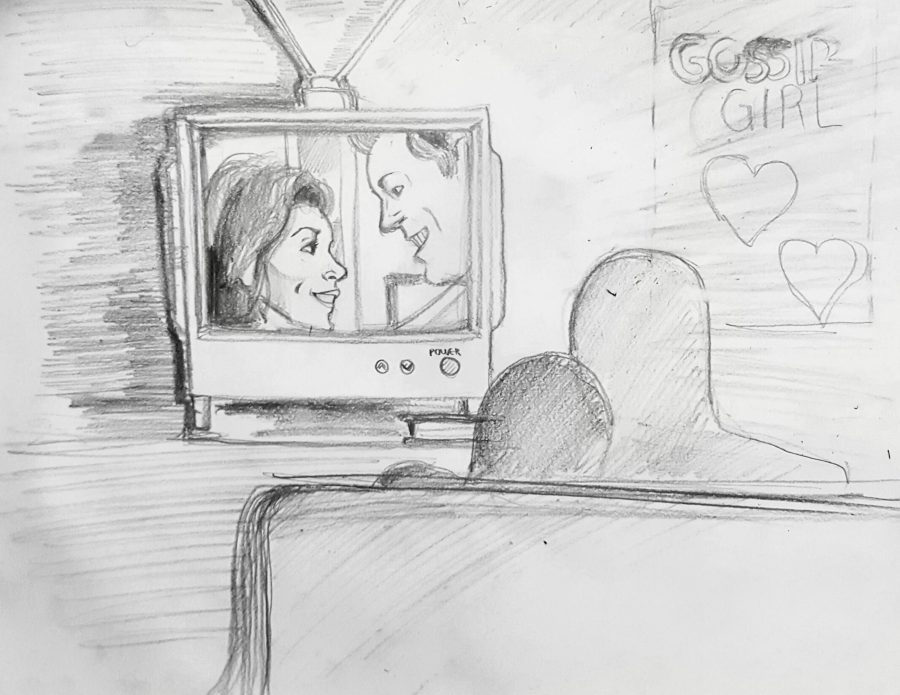Healthy Relationships Are Needed on TV
Television shows give unhealthy relationships more screen time because they prioritize attracting viewers. Showcasing these unhealthy relationships normalize and romanticize them.
March 27, 2017
Television series are becoming increasingly prominent in the entertainment world. With streaming services like Netflix, old TV shows can be re-watched and sometimes even gain more relevance, while new ones can reach a larger audience, including international screens. However, the sphere of influence from television shows has also grown, pushing showrunners to be more aware of the content they produce. Characters are beginning to be seen as real life people, and their relationships analyzed, instead of being consumed for pure amusement. Even still, many of these relationships are unhealthy and sometimes even abusive, but they are still seen as ideal and desirable.
The ‘90s sitcom, “Friends,” exemplifies this. While Monica and Chandler are the healthy and stable relationship of the show, it is Rachel and Ross that are in the spotlight. Even though I rooted for Rachel to get off the plane to be with Ross while watching “Friends” for the first time, it is undeniable that their relationship displays unhealthy signs. Throughout 10 seasons, Rachel and Ross never seem to decide to either cut their romantic ties entirely or commit to working on them, causing constant confusion for both of them and for the group. However, fans still idealize their relationship and see it as hashtag-relationship-goals — when it is Monica and Chandler who should receive that title.
These unhealthy traits in relationships are worse in shows targeted at younger generations. Chuck and Blair’s relationship in “Gossip Girl” also makes constant cheating, lying and deceiving seem like signs of “true love.” The late ‘90s supernatural drama “Buffy the Vampire Slayer” seems to be the only show targeted at teenagers and young adults that has healthy relationships. While the title character has some controversial involvements, she usually has loving relationships with her partners — that usually escalate to unforeseeable consequences. Nonetheless, Buffy’s best friend, Willow Rosenberg, is the best example in the show. Willow manages to not only have one but two long-term and caring relationships, while still being her own person and discovering herself. Other young adult-targeted shows as “The O.C.” and “Riverdale” seem not to prioritize the veracity and sanity of the characters’ relationships, instead using them to attract more viewers and create drama.
Because young people are particularly influenced by the media they consume, writers should be especially careful when developing characters’ relationships. But not all television relationships must be completely perfect. They should simply be representative of real life — encapsulating all the messiness and imperfection — including the connections they make with other people. While depictions should still show the implications of bad involvements, they should also normalize healthy relationships, instead of portraying them as boring or stagnant.
Opinions expressed on the editorial pages are not necessarily those of WSN, and our publication of opinions is not an endorsement of them.
Email Carine Zambrano at [email protected].



























































































































































